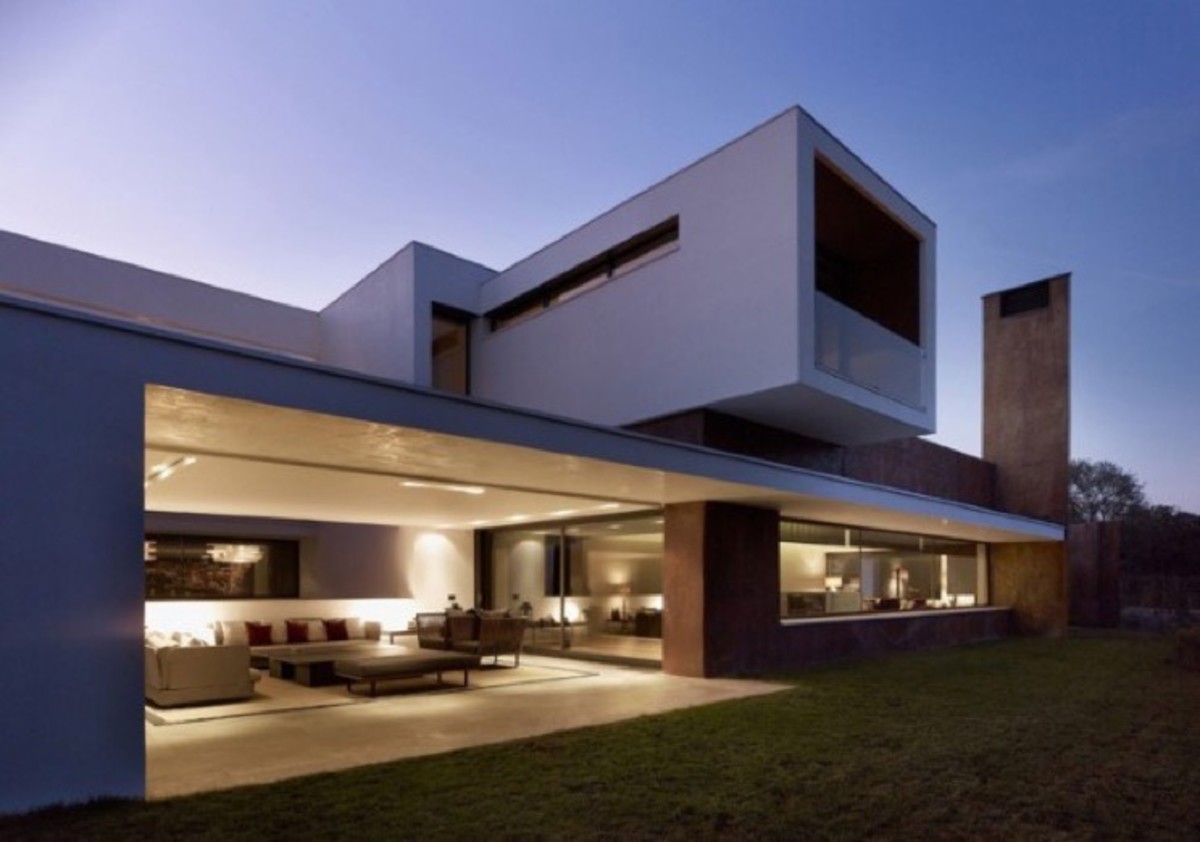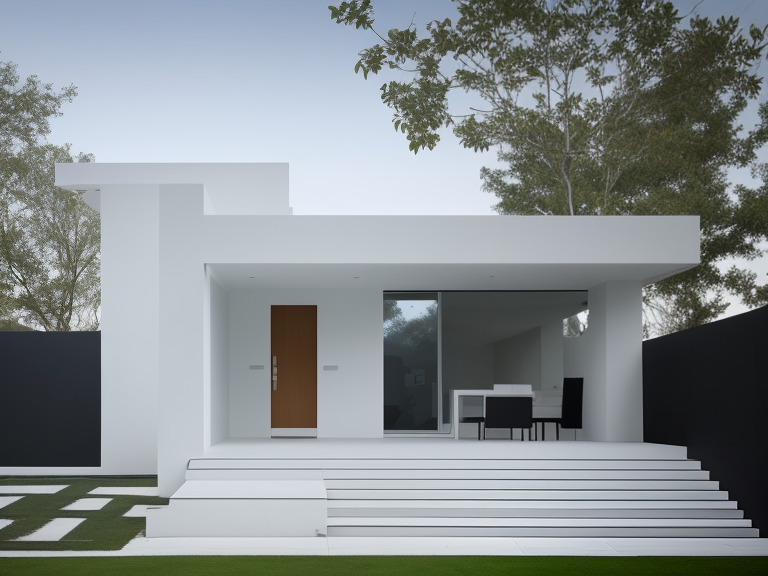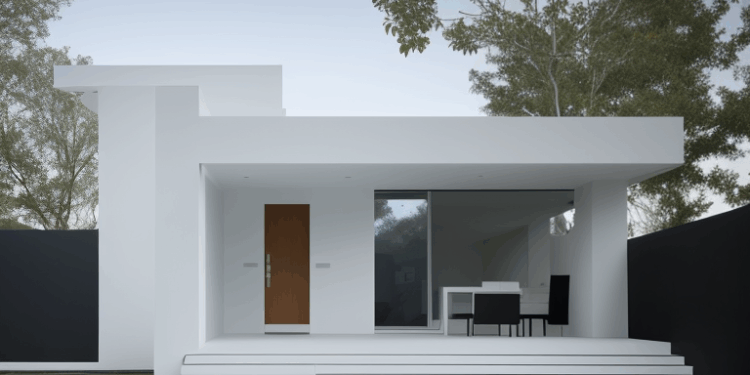Exploring the world of Minimalist Design Principles for Residential Buildings offers a fresh perspective on creating elegant and functional living spaces. From the fundamental elements to practical tips, this guide delves into the essence of minimalism in architecture.
As we uncover the importance of minimalist design principles and how they enhance the functionality of residential buildings, we also examine the role of materials, colors, and innovative storage solutions in achieving a minimalist aesthetic.
Importance of Minimalist Design Principles
Minimalist design principles play a crucial role in residential buildings by promoting simplicity, functionality, and aesthetic appeal. By embracing minimalism, architects and designers can create spaces that are clean, uncluttered, and visually pleasing, ultimately enhancing the overall quality of living for residents.
Key Benefits of Minimalist Design in Residential Architecture
- Enhanced functionality: Minimalist design focuses on essential elements, leading to more efficient use of space and improved functionality in residential buildings.
- Timeless aesthetics: Minimalist architecture often features clean lines, neutral colors, and natural materials that create a timeless and elegant look, ensuring that the design remains relevant for years to come.
- Improved mental well-being: Minimalist spaces can promote a sense of calm and tranquility, reducing stress and improving overall mental well-being for residents.
- Energy efficiency: By eliminating unnecessary elements and focusing on sustainable design practices, minimalist buildings can improve energy efficiency and reduce environmental impact.
Examples of Successful Residential Buildings Embracing Minimalist Design Principles
One example is the Farnsworth House designed by Mies van der Rohe, known for its minimalist approach with an emphasis on open spaces and simple geometric forms.
Another example is the Vila Tugendhat in Czech Republic, designed by Ludwig Mies van der Rohe, showcasing minimalist design with a focus on functionality and elegance.
Key Elements of Minimalist Design
Minimalist design in residential architecture is characterized by simplicity, clean lines, and a focus on functionality. The key elements of minimalist design commonly used in residential buildings include:
1. Neutral Color Palette
One of the essential elements of minimalist design is a neutral color palette. Whites, grays, and earth tones are typically used to create a sense of calm and simplicity in the space.
2. Clean Lines and Geometric Shapes
Minimalist design emphasizes clean lines and geometric shapes. Furniture and architectural elements are often simple and sleek, with no unnecessary ornamentation.
3. Minimalist Furniture and Decor
In minimalist design, less is more. Furniture and decor are kept to a minimum, with only essential pieces that serve a purpose. Clutter is avoided to maintain a sense of openness and tranquility.
4. Natural Light and Space
Maximizing natural light and creating a sense of space are crucial elements of minimalist design. Large windows, open floor plans, and uncluttered layouts help to enhance the feeling of airiness and simplicity.
Comparison with Traditional Design Elements
Contrasting minimalist design elements with traditional design, which often features intricate details, ornate decorations, and a variety of colors, minimalist design stands out for its simplicity, functionality, and focus on the essentials.
Tips for Integrating Minimalist Design Elements
- Start by decluttering and eliminating unnecessary items in the space.
- Choose furniture and decor pieces that are simple, functional, and have clean lines.
- Opt for a neutral color palette to create a sense of cohesion and simplicity.
- Focus on maximizing natural light and creating an open, airy atmosphere.
- Embrace the concept of "less is more" and prioritize quality over quantity in design choices.
Overall, integrating minimalist design elements into residential spaces involves a thoughtful approach to simplicity, functionality, and creating a sense of calm and openness in the environment.
Functionality and Practicality in Minimalist Design
Minimalist design principles not only focus on aesthetics but also prioritize functionality and practicality in residential buildings. By simplifying the design and eliminating unnecessary elements, minimalist design enhances the usability and efficiency of living spaces.
Optimizing Space Utilization
Minimalist design can optimize space utilization in different rooms of a house by utilizing multifunctional furniture, clever storage solutions, and strategic layout designs. For example, using built-in cabinets or shelves that blend seamlessly into the walls can help maximize storage space without cluttering the room.
Additionally, incorporating furniture with hidden storage compartments, such as ottomans or bed frames with drawers, can further enhance the functionality of the space.
Innovative Storage Solutions
Innovative storage solutions play a crucial role in aligning with minimalist design principles. Examples include wall-mounted shelves, modular storage units, and sliding doors that reveal hidden storage areas. These solutions not only help declutter the living space but also contribute to a clean and organized environment.
By integrating storage options creatively within the design, minimalist homes can maintain a sense of openness and simplicity while addressing practical storage needs.
Materials and Colors in Minimalist Design

When it comes to minimalist design in residential buildings, the selection of materials and colors plays a crucial role in creating a clean and streamlined aesthetic. Choosing the right materials and color palettes can enhance the overall look and feel of a space, emphasizing simplicity and functionality.
Role of Materials in Minimalist Design
In minimalist design, materials are often chosen for their simplicity and quality. Common materials used include natural wood, metals such as steel and aluminum, glass, and concrete. These materials are selected for their clean lines, durability, and timeless appeal. By incorporating these materials into the design of a residential space, a sense of harmony and balance is achieved, emphasizing the essence of minimalism.
Role of Colors in Minimalist Design
Color palettes in minimalist design are typically neutral and monochromatic, with tones such as white, beige, gray, and black being predominant. These colors create a sense of calm and tranquility in a space, allowing the focus to be on the form and function of the design elements.
By keeping the color palette simple and understated, the visual clutter is minimized, resulting in a clean and uncluttered look.
Impact of Natural Light on Minimalist Design
Natural light is a key element in enhancing the minimalist feel of a residential space. Large windows, skylights, and glass doors allow natural light to flood the interior, creating a sense of openness and airiness. The play of light and shadow adds depth and dimension to the space, highlighting the clean lines and simplicity of the design.
Natural light also helps to connect the indoor and outdoor spaces, blurring the boundaries and creating a seamless transition between the two.
Epilogue

In conclusion, embracing minimalist design principles can transform your living environment into a serene and clutter-free oasis. By understanding the key elements and benefits of minimalism, you can elevate the style and functionality of your residential space. Dive into the world of minimalist design and unlock the potential for a harmonious living experience.
Essential Questionnaire
How can minimalist design principles benefit residential buildings?
Minimalist design principles help create clean, uncluttered spaces that promote a sense of calm and simplicity, enhancing the overall aesthetics and functionality of residential buildings.
What are some essential elements of minimalist design in residential architecture?
Key elements include clean lines, open spaces, simple forms, neutral colors, and a focus on functionality over decoration.
How does minimalism optimize space utilization in residential buildings?
By eliminating unnecessary elements and focusing on essential features, minimalism maximizes space efficiency and creates a sense of openness in different rooms of a house.
What role does natural light play in enhancing a minimalist feel in residential spaces?
Natural light helps accentuate the minimalist design by creating a sense of brightness, airiness, and connection to the outdoors, enhancing the overall ambiance of the space.






